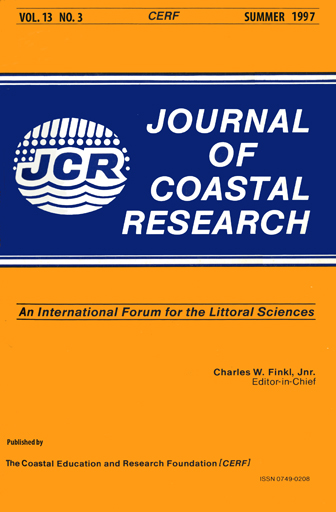Overview and Significance of Hurricanes on the Louisiana Coast, U.S.A.
Keywords:
Hurricanes, Hurricane Andrew, Louisiana, storm surge, overwash, beach erosion, numerical modelingAbstract
Hurricanes have played a critical role in the transgressive evolution of Louisiana's barrier islands and may account for up to 90% of shoreline retreat measured within the historic (102 years) time frame. Since 1901, some 55 tropical storms or hurricanes have made landfall along the Louisiana coast showing the highest incidence in September. Fewest landfalls have been recorded along the eastern region of Louisiana with the incidence being double that along the southcentral and southwest regions of the State. Approximately half the total number of tropical cyclone landfalls occurred in a thirty year period between 1931 and 1960, bounded by two of the 'quietist' decades of the past one hundred years; 1921-1930 with two direct landfalls, and 1961-1970 with two landfalls. Review of intensities of storms making landfall along the U.S. mainland through 1992 shows that 11 of the 50 strongest storms have impacted Louisiana. Given that the foredune elevation along the Louisiana coast seldom exceeds 2m above sea level, the significance of overwash processes and inlet breaching becomes readily apparent. Episodic landward translation of the beach of near 100 m is typical during stronger hurricanes. Post-storm recovery of the barrier islands has been thwarted by a reduction of sediment supplied to the littoral zone over time, subsidence, rapid relative sea-level rise and anthropogenic activity. Consequently, Louisiana's barrier islands are predisposed towards chronic erosion and land loss.
Although hurricanes have proven destructive along the open coast, they have resulted in considerable deposition on portions of Louisiana's marshes. Examples include over 70 cm of mixed organic and inorganic debris accumulating after Hurricane Audrey (1957) and up to 16 cm of vertical accretion after Hurricane Andrew (1992). However, ongoing work suggests that substrate compression during storm passage may significantly reduce, or nullify, the effect of storm deposition on the marshes' long-term net elevation gain. Areas of floating marsh undergo considerable damage during severe hurricanes. Predictions of future wave and storm surge accompanying severe hurricanes (category 5) indicate that significant waves heights between 1 and 2 m can be anticipated as far inland as New Orleans. A gradual landward shift of larger waves is predicted with time due to the disappearance of barrier islands and coastal retreat. Wave heights up to 4 m are predicted in Lake Ponchartrain, located immediately north of New Orleans, for a category 5 hurricane making landfall along the Isles Dernieres. On considering that modeled surge levels increase from around 4 m to 7 m along the lake's northern shore, a hurricane of this magnitude will likely cause severe destruction and evacuation problems for the City of New Orleans and surrounding metropolitan areas.


